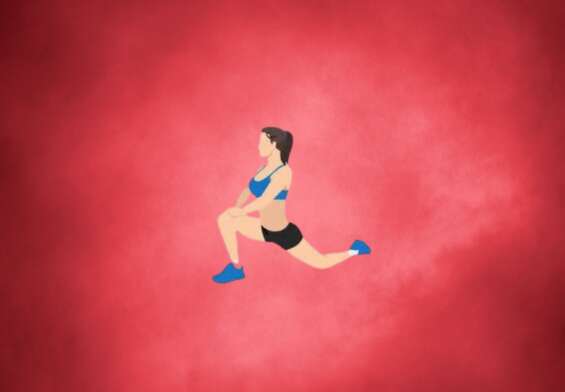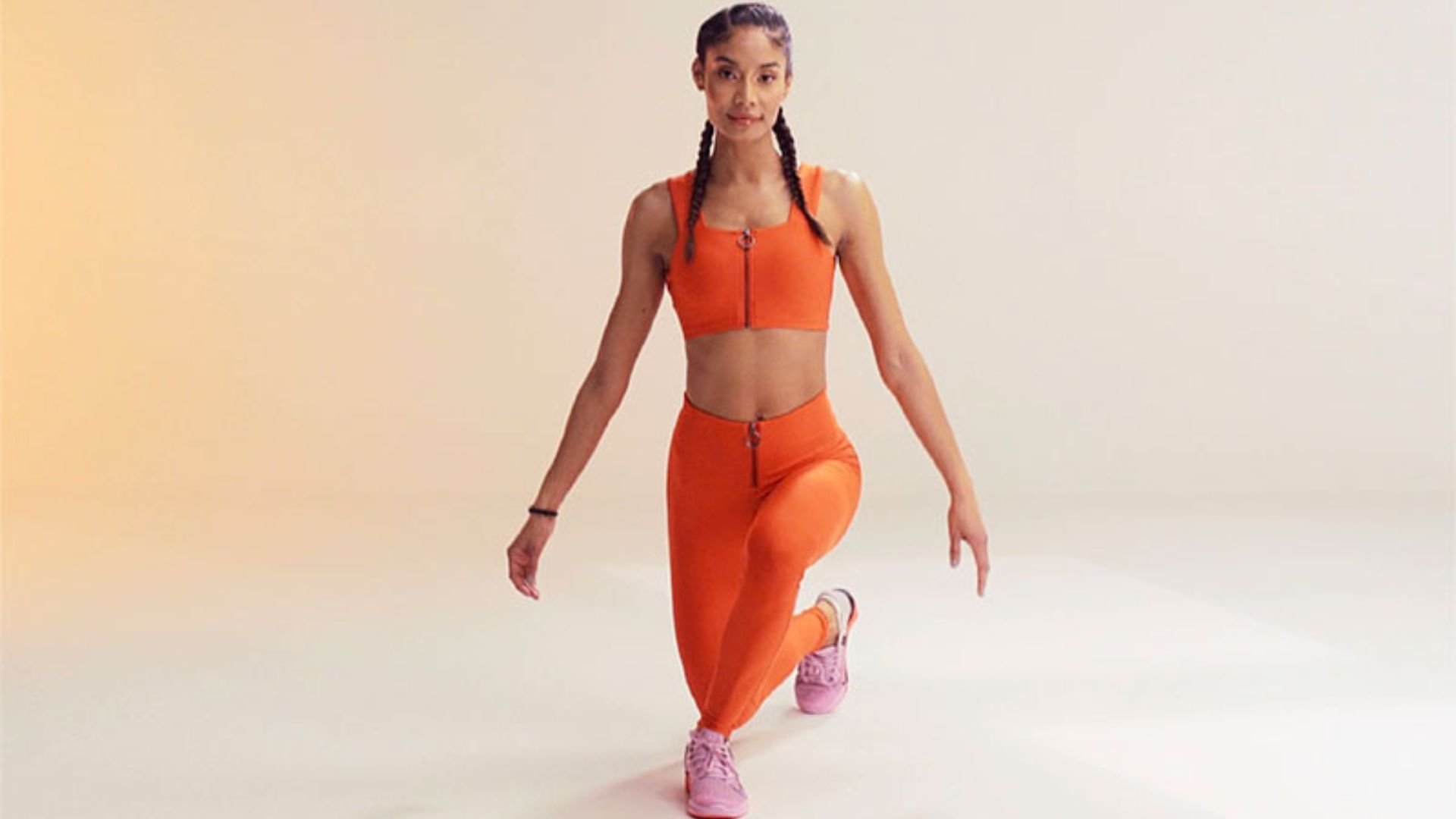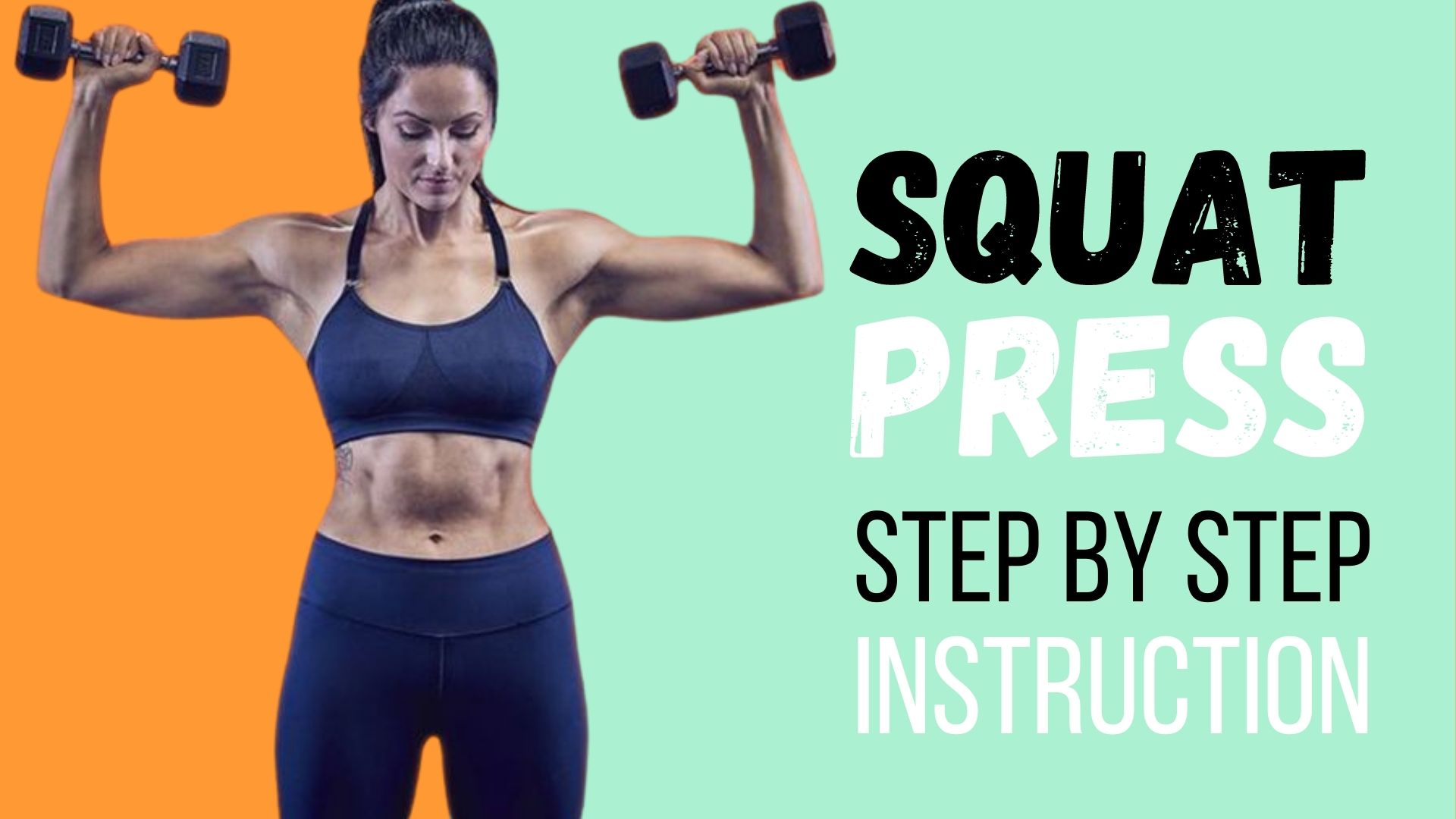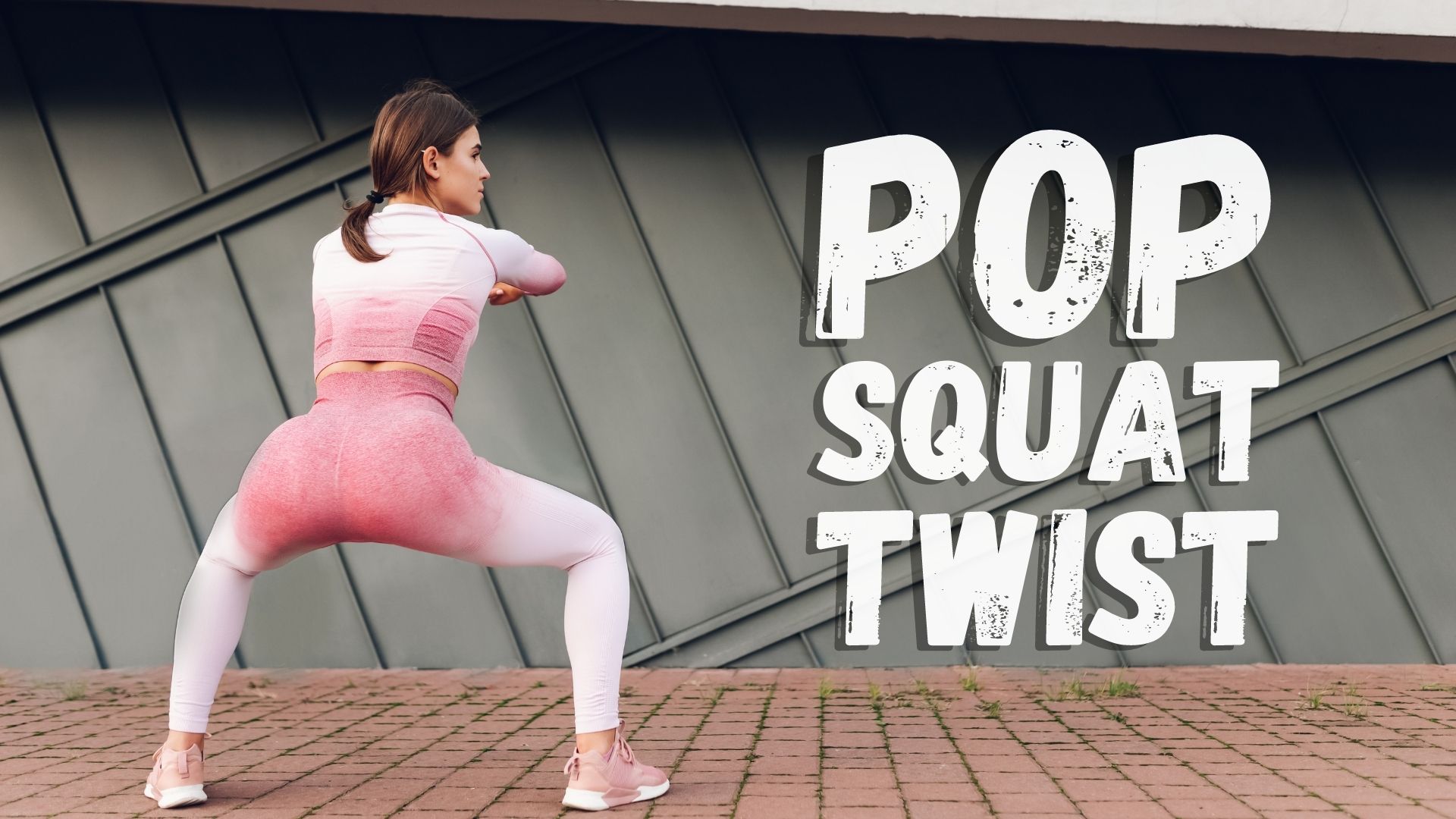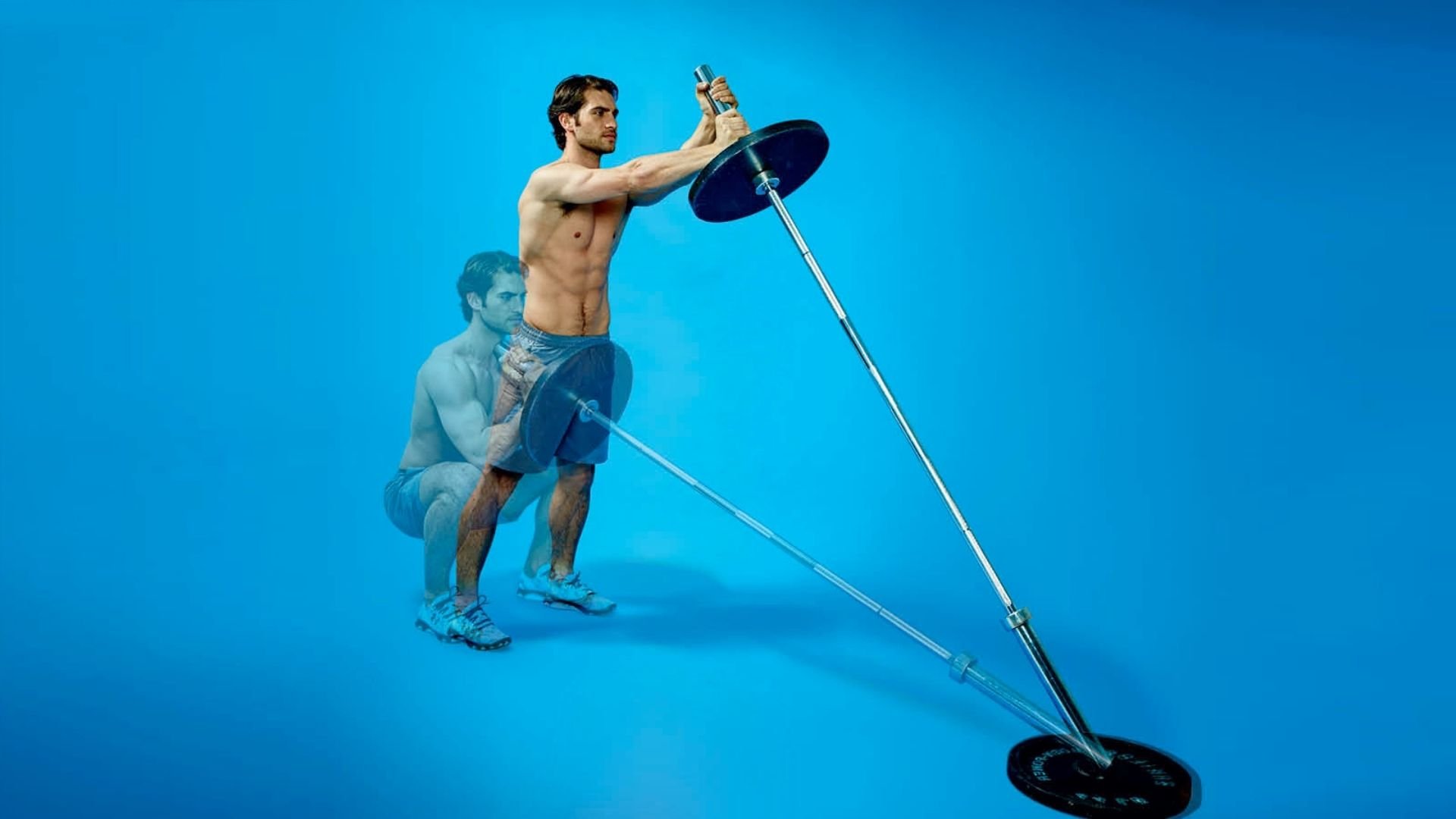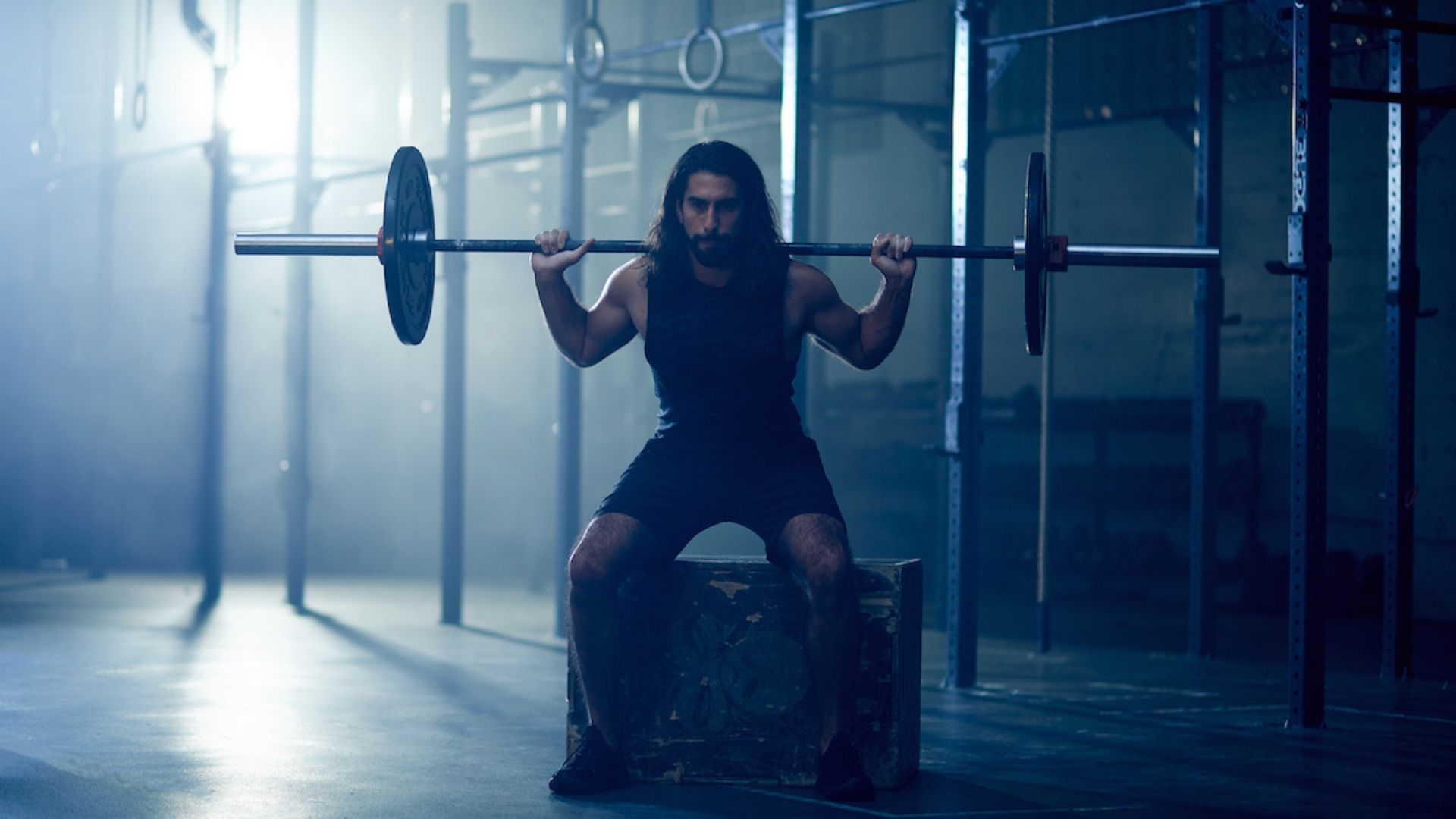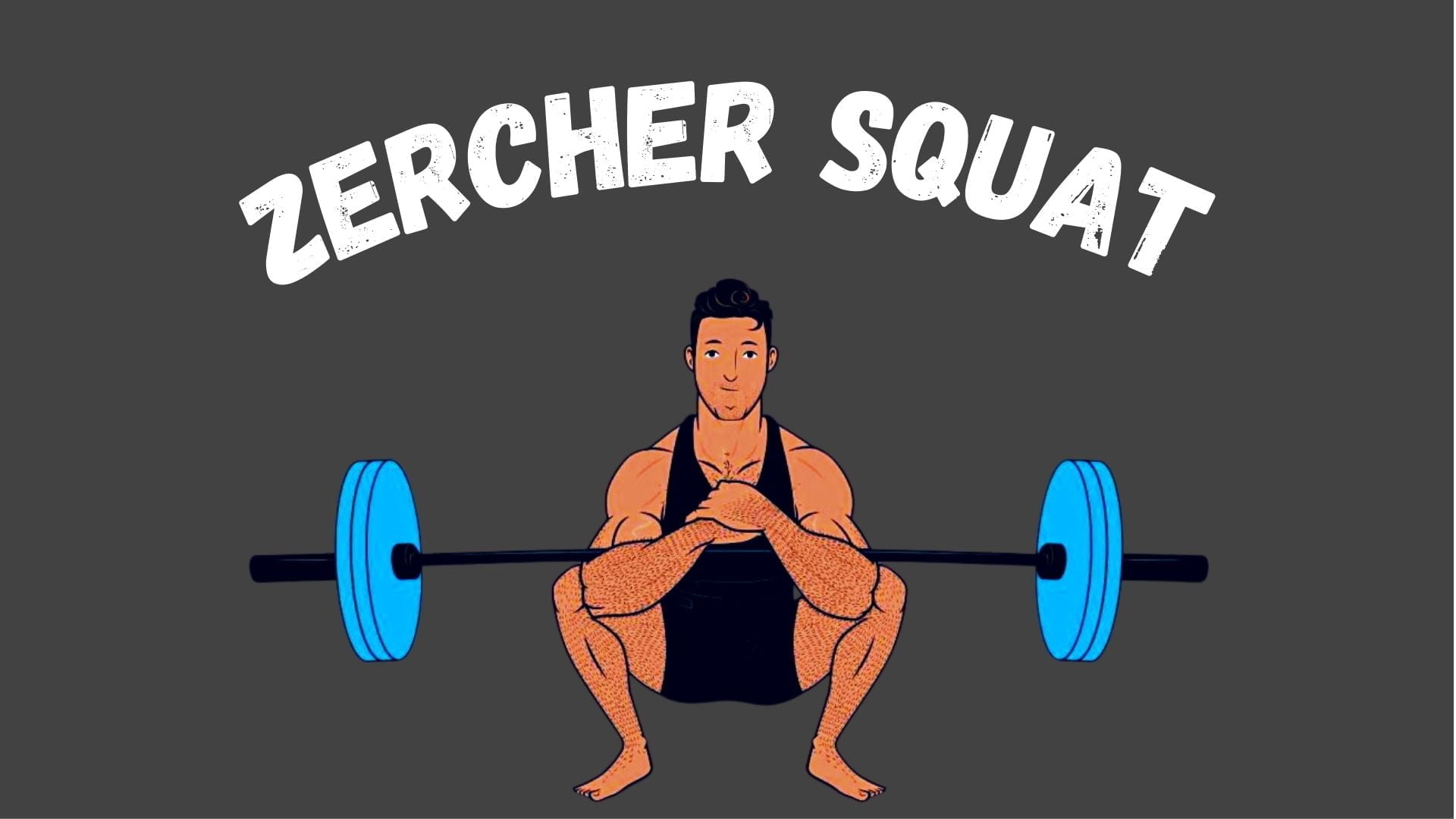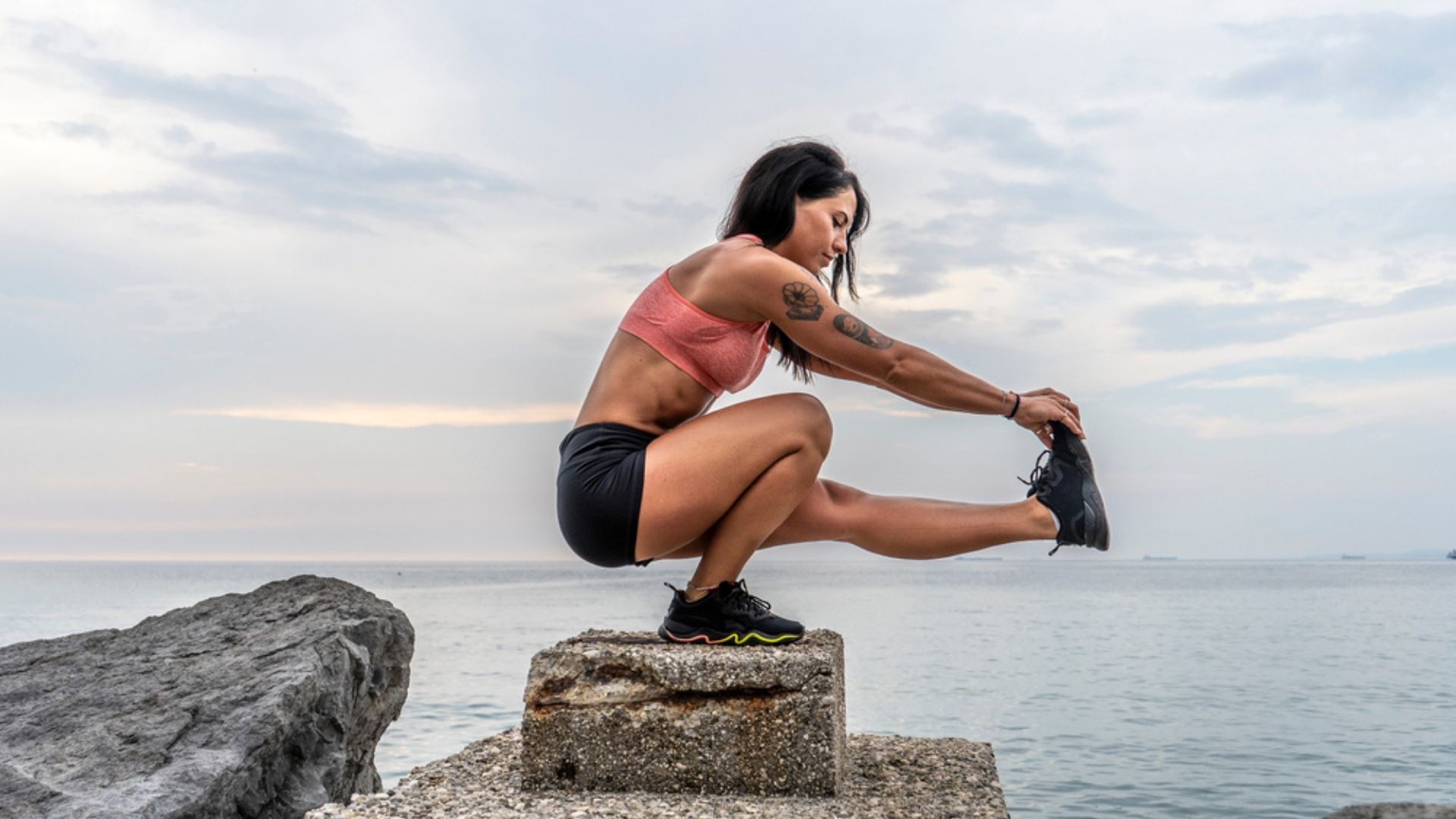
Single-Leg Squat Exercise: Master the Move!
A single-leg squat, or squat movement, can be performed only on one leg.
This adds balance and stability to the traditional squat.
These are also known as pistol squats.
This type of squat can be used for intermediate to advanced exercises.
After mastering the movement of the squat on both legs, you should only go on to single-leg squats.
If you’re new to the move, you can modify it using a chair.
How To Do A Single-Leg Squat
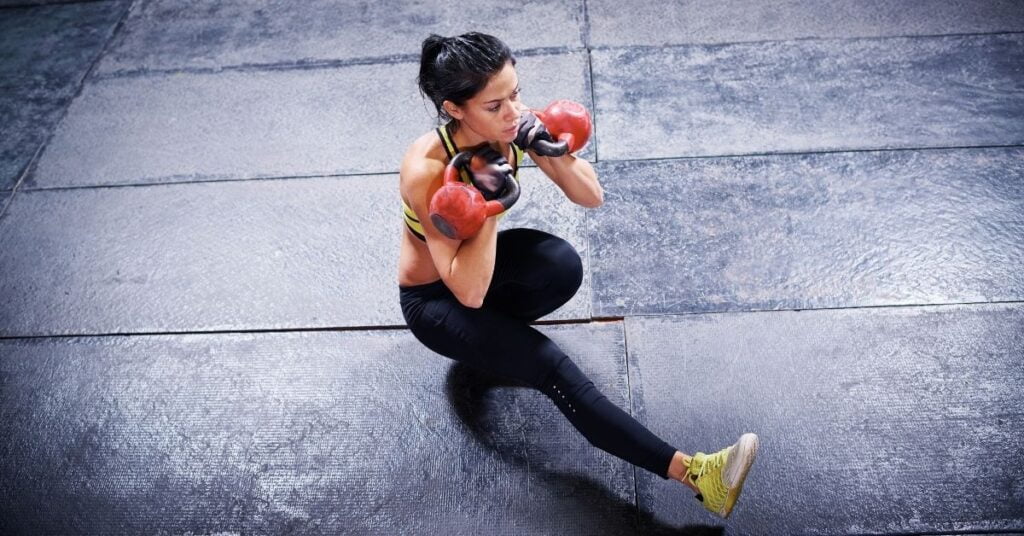
To perform single-leg squats, you don’t need any special equipment.
If you want to be more challenging, you can either hold a dumbbell with one hand or a medicine ball with both.
- Stand on your right foot.
- Your left leg should be lifted out in front of you.
- To start, you could bend your left knee and raise your left leg.
- For balance, your arms could be at your side or in front.
- Throughout the movement, keep your core engaged and keep your torso elevated.
- As you lower into a squat, push your hips back.
- Your hips should be parallel to the ground.
- To stand up, squeeze your glutes and push into the right foot.
- Between reps, keep your left leg straight.
- Do 5-10 reps on each side before moving to the left.
Do 3 sets.
Common Mistakes
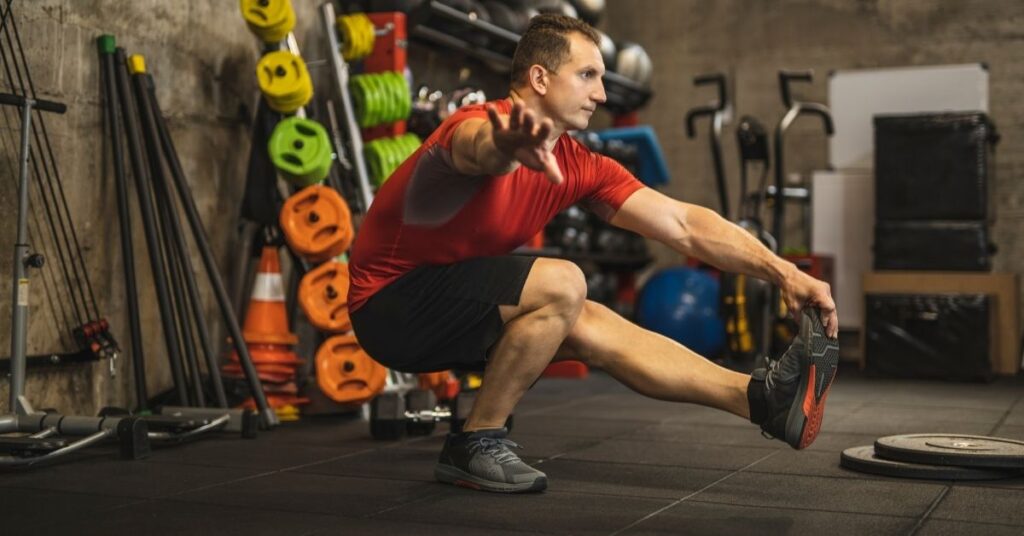
These mistakes can be avoided to get the most from this exercise.
Too Far Forward
Your knee should not extend past your toes.
Think of your hips moving back and your knees forward when you squat.
Your knee should align with your toes, not shift inwardly or outwardly.
Round Shoulders And Back
Your shoulders should be lowered, and your chest should be open.
Throughout the squat, your back should be straight.
Your head and neck should remain neutral (aligned to your spine).
Beginners: Single-Leg Squat With Chair
A chair is an excellent option for beginners or those who have difficulty balancing.
Start by sitting in a chair with your torso raised and your core engaged.
Lie down and extend your left leg straight in front of the other.
Your weight will be in the heel of the other leg, which will remain on the ground.
You can use your arms to propel yourself to stand to balance your leg and weight in your heel.
Keep the same leg elevated and slowly lower your body back to get in the chair.
Do 5-10 reps.
You can do up to three sets
Advanced Version: Pistol Squat
This is an advanced variation and requires some equipment.
You will need two dumbbells or a kettlebell to perform this move.
For an added challenge, you could add a Bosu Ball.
This move can be performed by following the above steps for a single leg squat and adding in dumbbells or kettlebells.
When using a kettlebell, place it in your hands and hold it up to your chest.
When using dumbbells, keep one dumbbell in each of your hands by your sides.
To add an upper-body move, raise your arms in front of yourself while you squat.
After mastering this variation, you will be able to hold the weight over your head.
You can do the squats using a Bosu ball to test your balance.
What Are The Benefits?
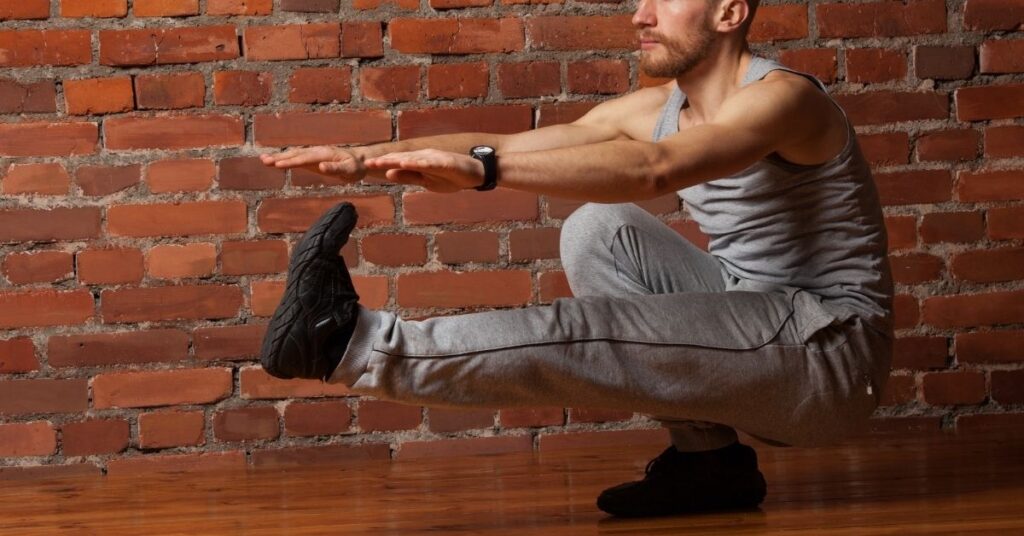
These muscles are activated by the single-leg squat:
- Glutes
- Cavaliers
- Shins
- Thighs
- Abdominals
Additional benefits are listed below.
Less Impact On Your Spine
The single-leg squat has slightly different benefits from the traditional squat move.
A 2018 study trusted source showed that single-leg squats are more effective for those with low back pain or recovering from a sports injury.
Researchers discovered that single-leg squats allowed participants to exert the same muscle activity in the hip, calf, and hamstring muscles as the double-leg squat, but less on the spine.
Before starting a new exercise program, consult your doctor if you have a back injury.
Your injury may require them to recommend modifications or different movements.
Your balance is up for the challenge.
Single-leg squats are effective in challenging balance and can help to strengthen core muscles.
A Bosu ball will help you to focus on building your balance skills.
How To Add Single-Leg, Single-Leg Squats Into Your Routine
Single-leg squats should be done two to three times per week as part of strength training.
Your body should rest for at least one day to allow your muscles to recover and rebuild.
To create a strength program, combine single-leg squats and the following exercises:
- Step up
- Walking lunges
- Romanian deadlift
- Side planks
Each leg or side should do 5-10 reps. Repeat the exercise three times.
Safety Concerns
Single-leg squats are intermediate to advanced moves.
Single-leg squats can be challenging to master.
This move can be learned by starting with the double leg squat.
This will help you learn the correct form.
When doing the single-leg squat, poor form can cause injury to the hip, knee, and leg.
A certified personal trainer can help you learn how to make this move correctly the first time you try it.
They will be able to spot mistakes and make any necessary adjustments.
If you are injured or in pain, you should not do single-leg squats.
Squat Is Not Key: Single-Leg Variants
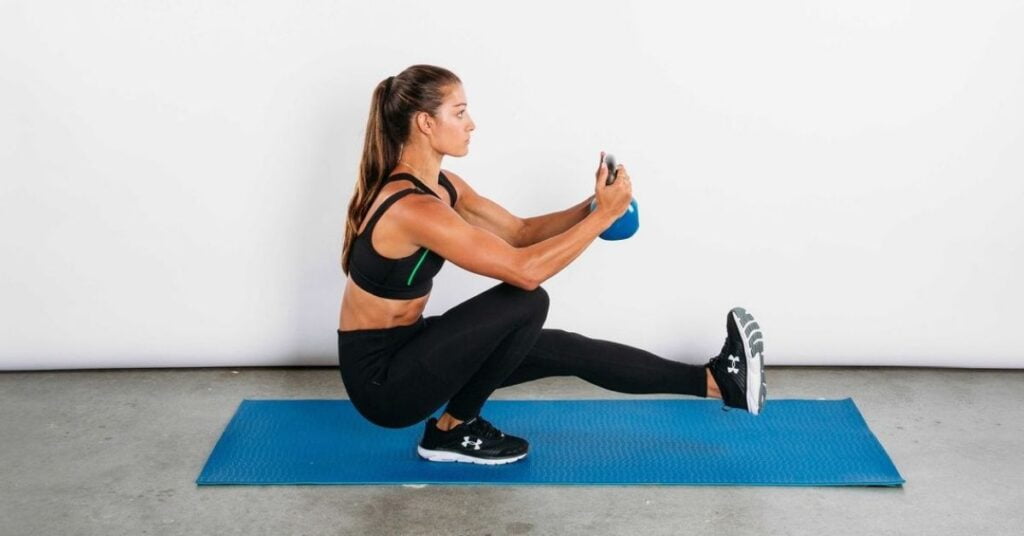
Bulgarian Split Squat
Benefits
Balance, hypertrophy, corrections strength imbalances; single-leg strength.
The split squat was first popularized in America by the head coach for the Bulgarian Olympic weightlifting squad, who visited the country to discuss the team’s achievements in the 1980s.
It’s not surprising that this unilateral squat variation is so popular.
Unilateral training is an excellent option for anyone who lifts, from novices to elite athletes.
To isolate the muscles of one leg, you need to have balance, flexibility, mobility, strength, and a lot of strength.
Unilateral training allows the lifter not to gain a lot of weight.
This can reduce back pain and improve joint health.
This does not mean that you should keep your weight low.
You can lift heavy weights using a Bulgarian split squat with a bit of practice.
The variety of loan options available to the Bulgarian split squat is one of its most fascinating features.
For serious weight, you can load up a barbell on your front or back or hold one or two dumbbells.
These variations can alter the load characteristics of your body and give you new obstacles to overcome.
Cues
Once your choice has been made about how to load the movement, place one leg behind you on a bench.
Your toes or laces should rest on the bench.
Keep your core braced and your torso straight.
Lower your body so that your back touches the ground.
Continue to drive up the forward leg until your back touches the ground.
You should switch sides as you do with unilateral movements.
You may feel some stretch in your hips and hip flexors on the back leg.
This feeling will fade over time, and it is actually a benefit of this movement.
You will feel more flexible in your hips as time goes by.
Cossack Squat, Or Side Lunge
Benefits
Balance, mobility, single-leg strength.
The single-leg Cossack Squat is often used to warm up or mobility drills.
However, it can also be a powerful strength-building tool for those willing to practice.
The Cossack squat is named after the Cossack people of Russia and Ukraine.
It mimics the Ukrainian Shumka dance move and has been used for strength-building exercises for many years.
One of the most appealing aspects of the Cossack Squat is its multi-planar motion.
Your body will need to move in more than one plane.
This will result in greater strength, flexibility, mobility, and coordination.
This move is ideal for those who have difficulty squatting at full depth.
The movement requires the full range of motion to be effective.
This movement is very versatile in terms of how it can be loaded.
You can use a barbell or a dumbbell on your shoulder or in your hand for even loading.
Cues
With your feet slightly wider than your shoulders, place your lead foot in front of your trailing one.
As you shift your weight onto the lead leg, push your hips back and down as if you were doing a standard squat.
Your trailing foot should be flat on the ground and pointed forward.
If your hips reach your knee level, you can reverse the movement and drive through your lead leg to bring yourself back up to a standing place.
One-Legged Squat Or Pistol Squat
Benefits
Balance, mobility, single-leg strength.
The pistol squat is the ultimate test of strength, balance, and unilateral bodyweight.
Pistol Squats require you to control your body weight, flexibility, mobility, strength, and ability through a full range.
The single-leg pistol sit is loved by many but challenging to master, just like the one-arm pushup or one-arm pullup.
CrossFit has made pistol squats very popular in recent years.
However, I caution against doing them in the high volume typical of CrossFit.
This is not a movement that the average person can just read about and then go out and do.
You will need to learn a few stepping stones to achieve this fantastic feat of body weight manipulation.
This is a long-term endeavor and cannot be done in a day.
Keep going, and don’t let your discouragement stop you from achieving your goals.
I promise that you will reap the rewards.
Cues
With your weight on one leg, raise your other leg up, so your foot is above the ground.
Slowly move your hips forward and lower until your hip crease is below your knee.
This position is challenging to attain, so it’s worth trying to place objects of different heights behind your back, such as a standard or high chair.
You will be aiming at them with each rep.
Last Words
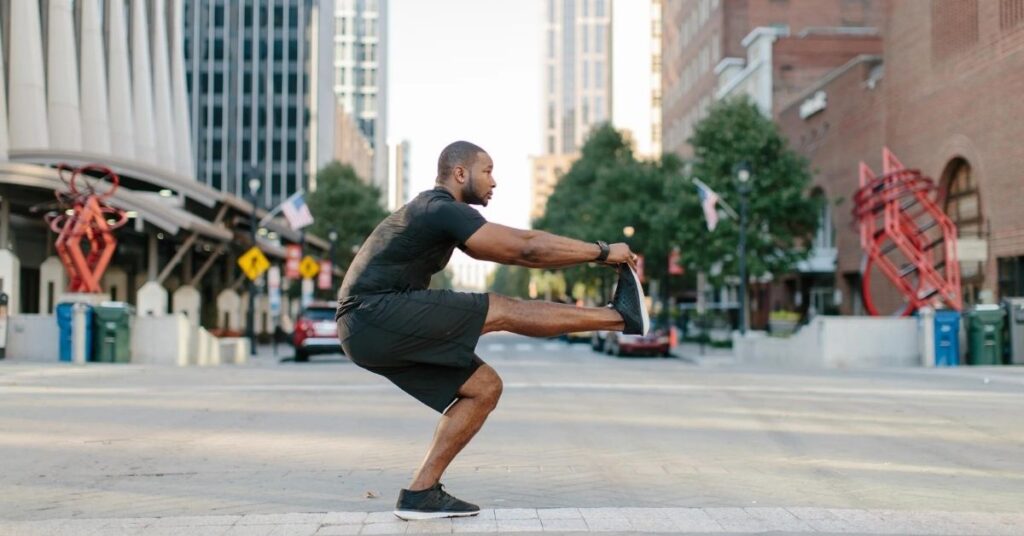
You may consider adding the single-leg or squat to your squat routine if you regularly do squats.
This can be a challenge to your muscles and help you balance.
You might start with the traditional squats if you are new to exercising.
Single-leg squats can cause pain or make it difficult for you.
If you’re ready to try something more challenging, you should stick with double-leg exercises until you feel comfortable.
Before you start a new exercise routine, make sure to consult your doctor.



